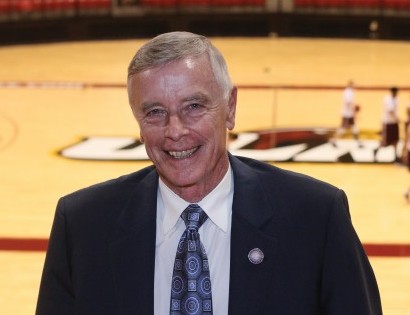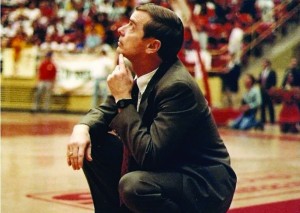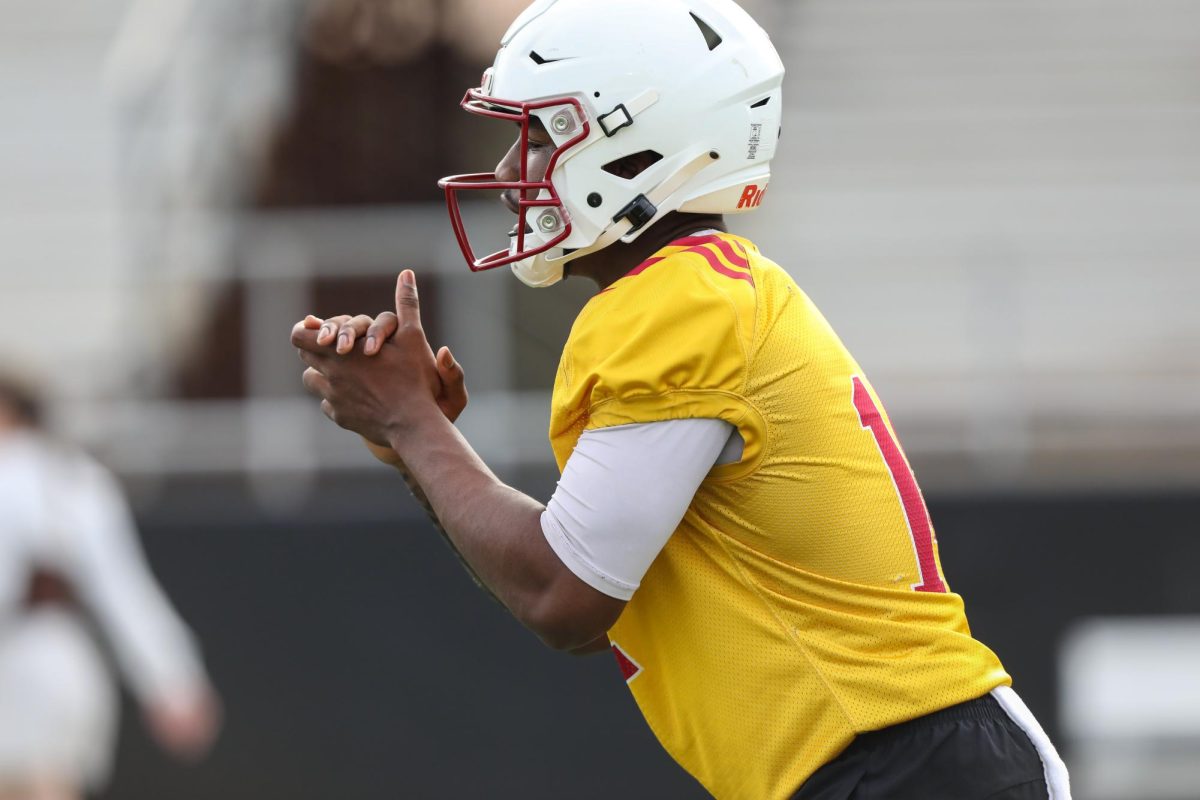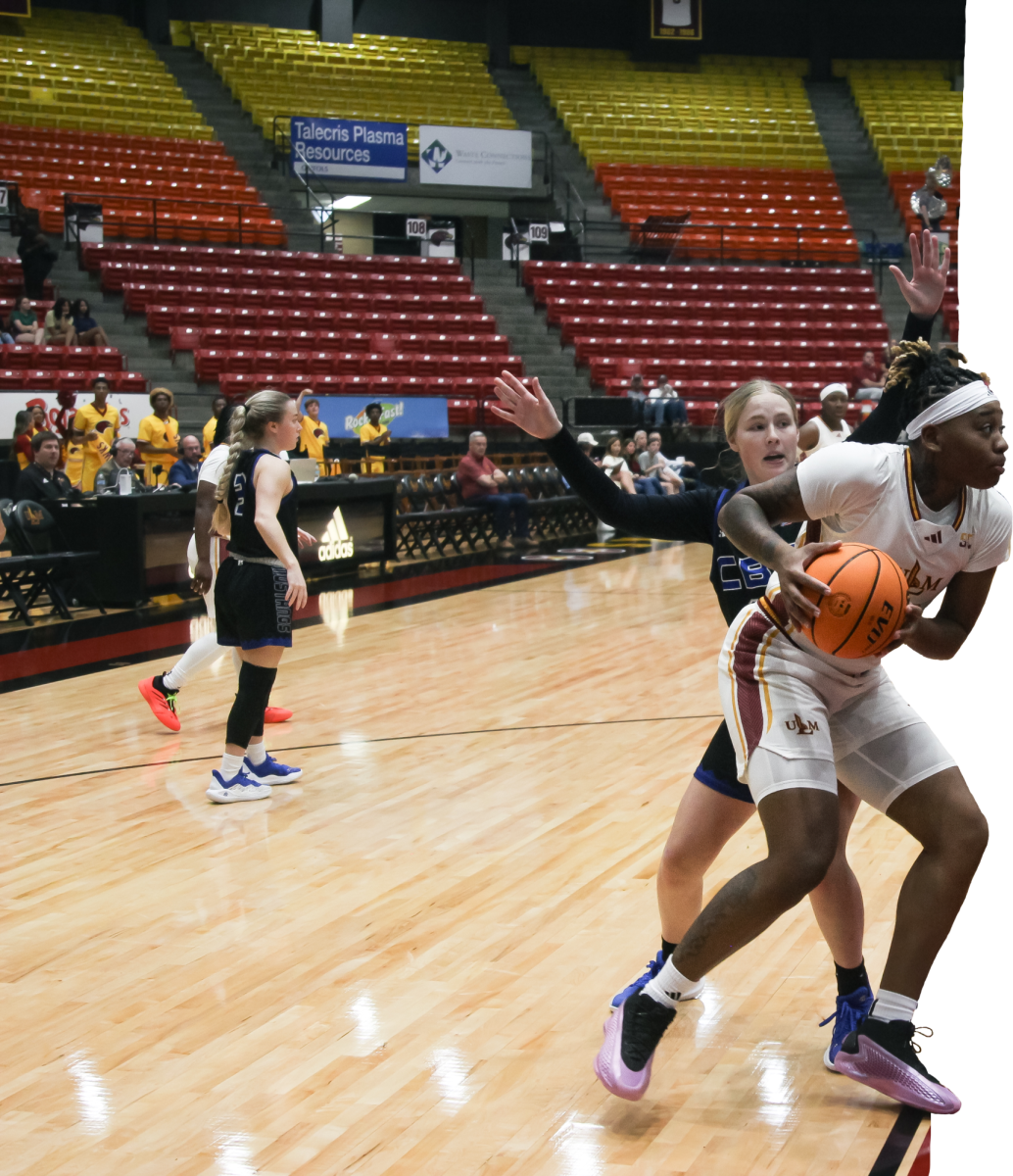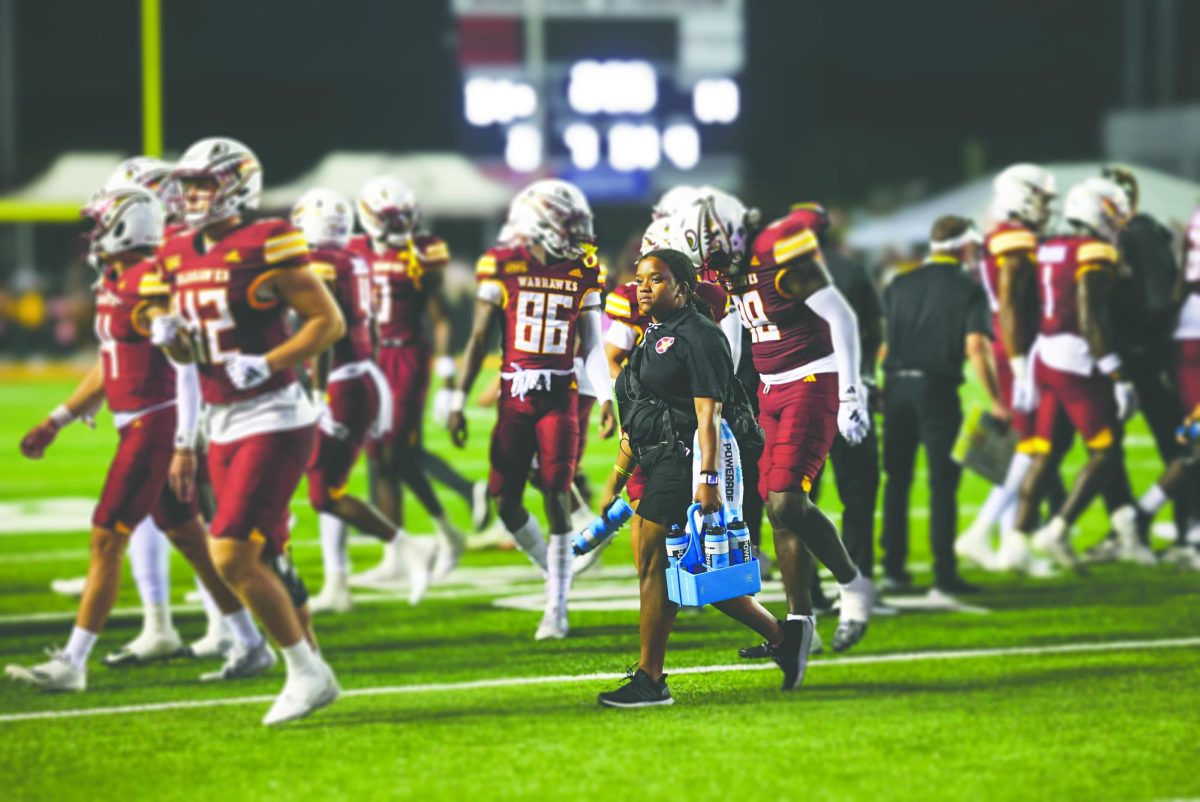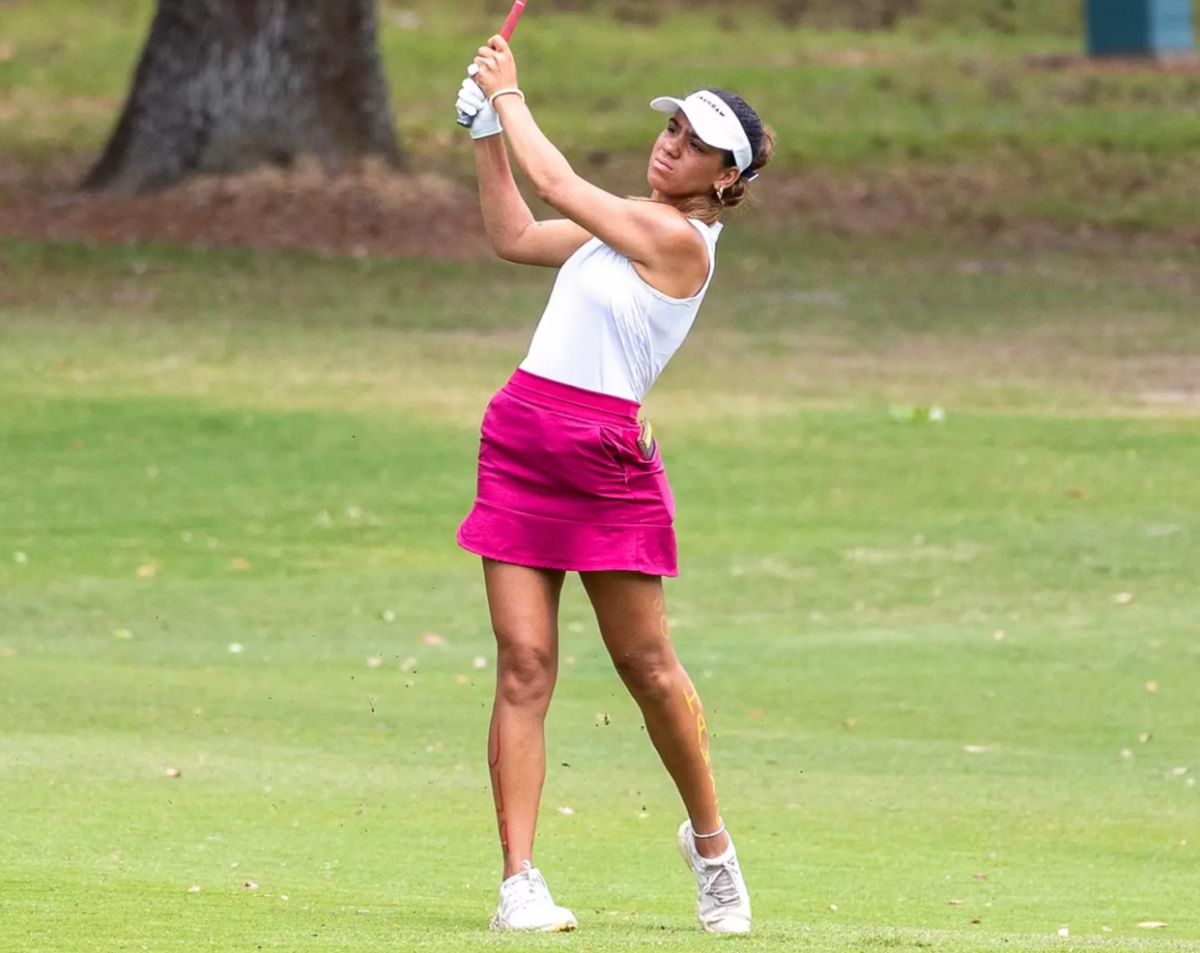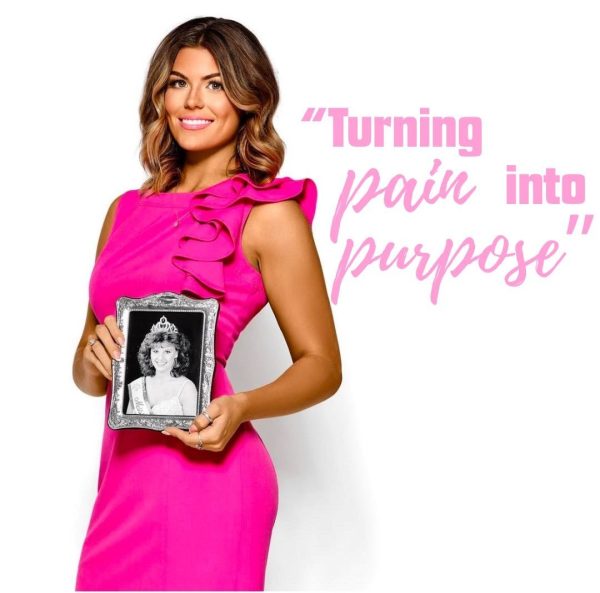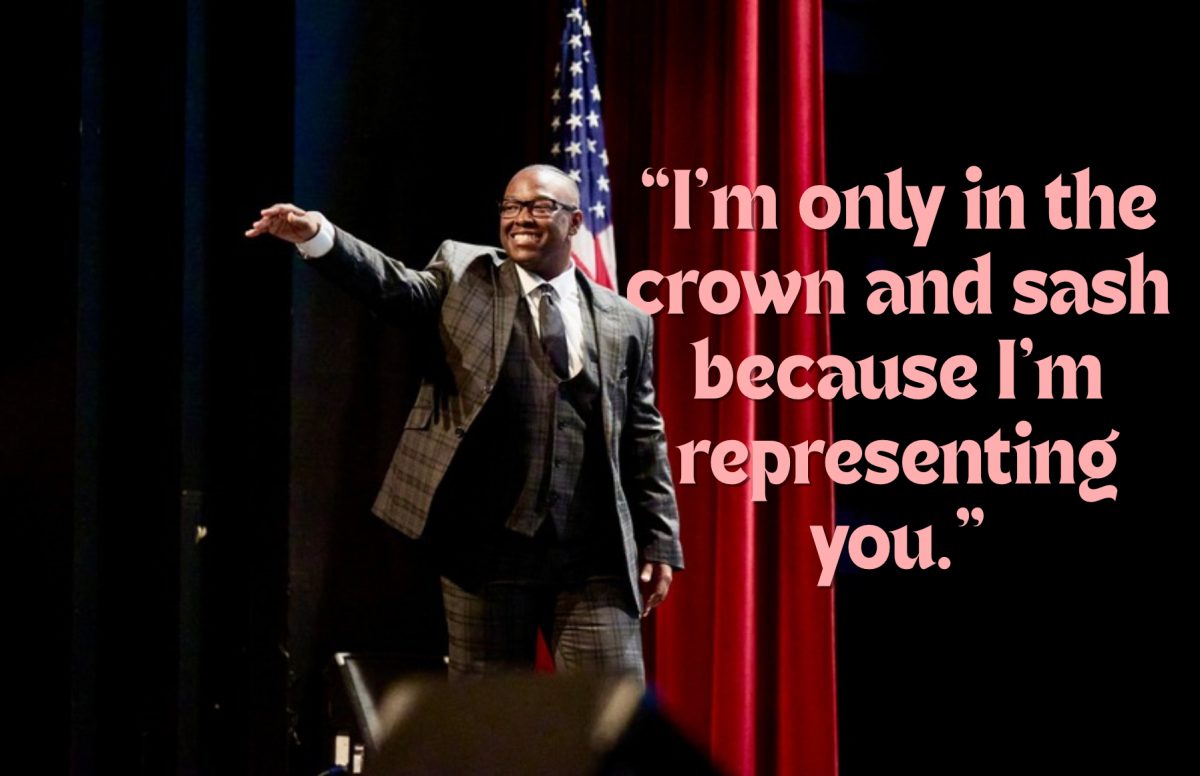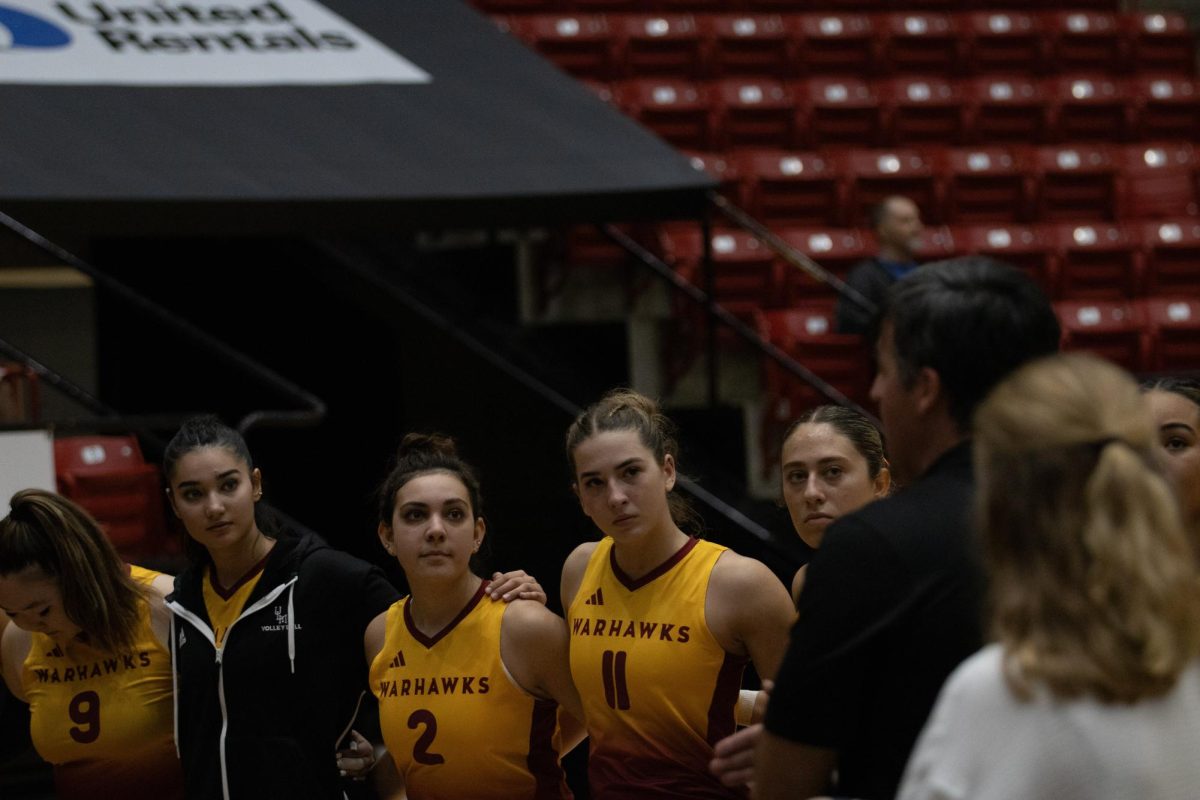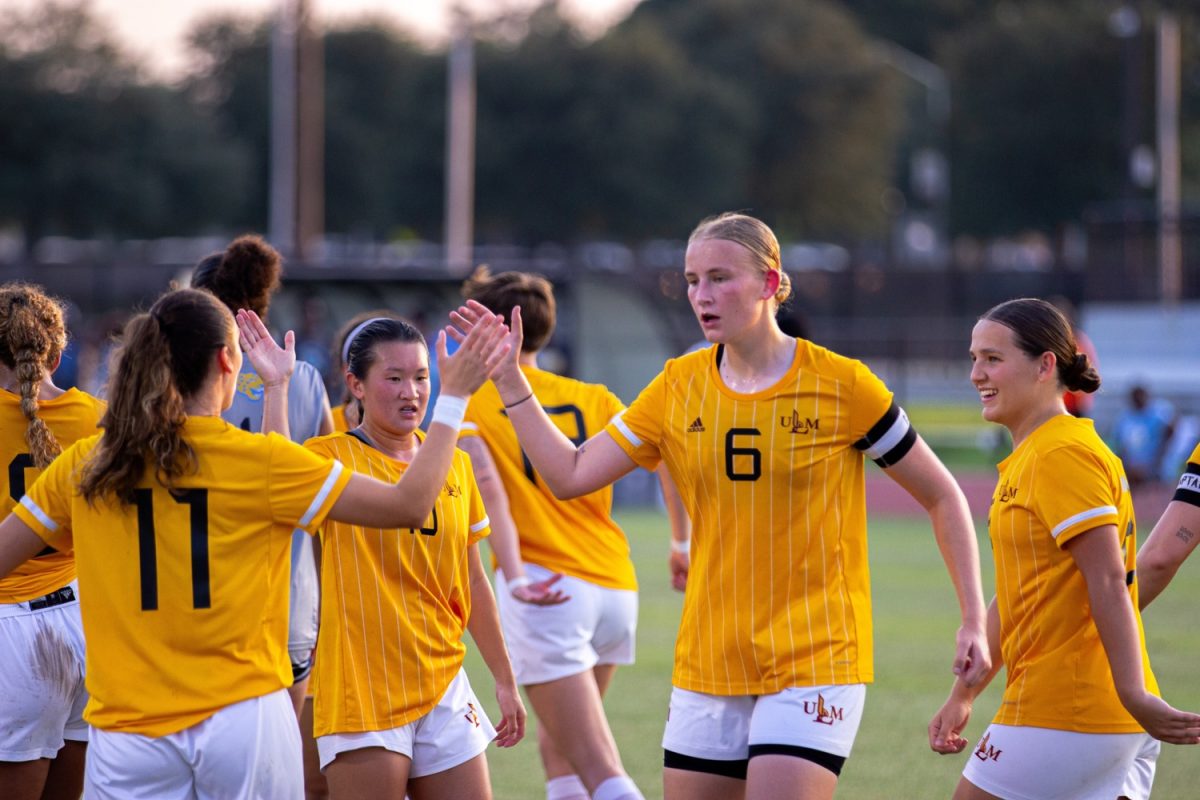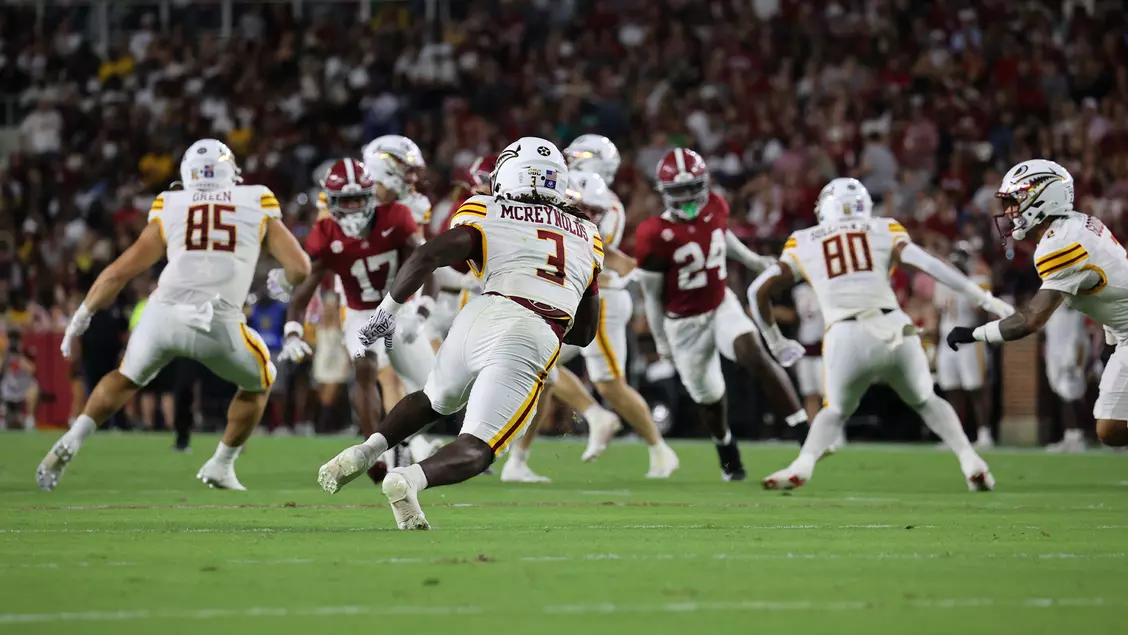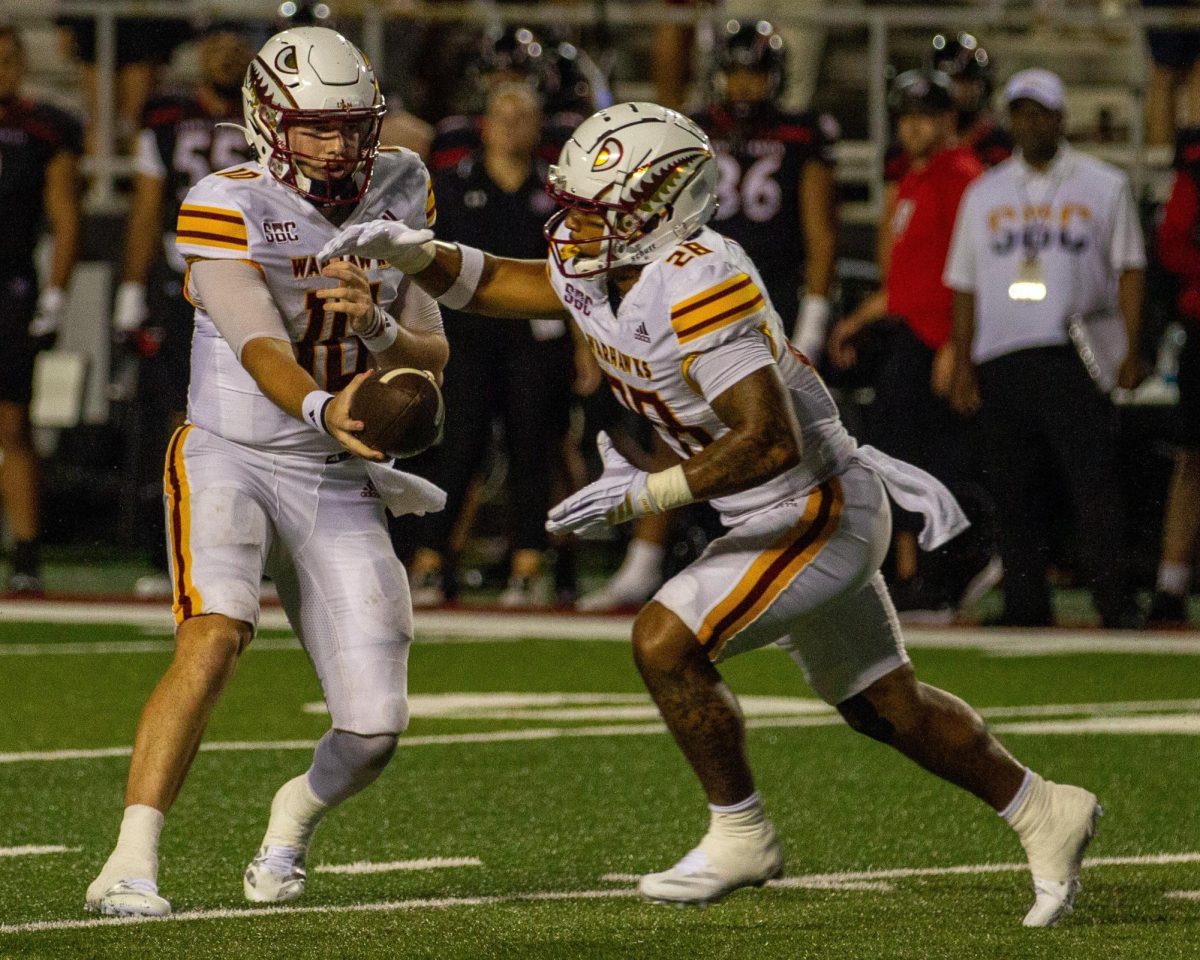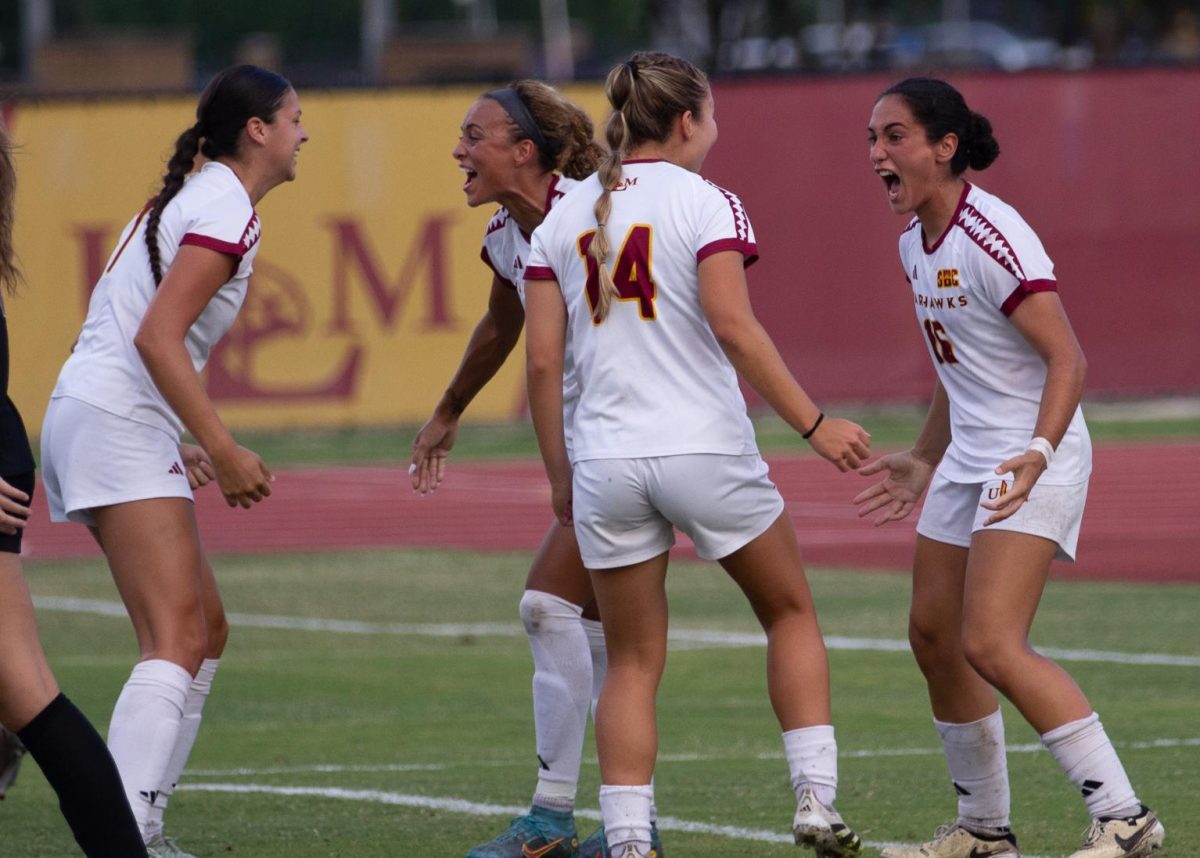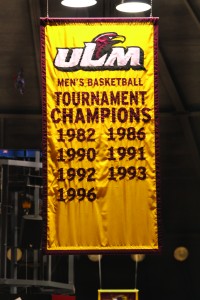 The banners hang high in the rafters, illuminated from even higher above, swallowed by the vast emptiness of Fant-Ewing Coliseum.
The banners hang high in the rafters, illuminated from even higher above, swallowed by the vast emptiness of Fant-Ewing Coliseum.
They go unnoticed by the people who roam these halls on a daily basis, but they tell a story.
A story of the days when fast breaks and full-court presses were the norm, and the roar of the student section took the roof off the building with every thunderous dunk.
Mike Vining, the man who wrote this story as ULM’s winningest basketball coach, looks up at them.
He says there used to be more banners—at least 10—but they’ve since been consolidated into five to save space.
“I had a player tell me once he didn’t think you could have enough banners. I guess you can,” Vining said, offering a glimpse of his trademark sense of humor.
He’s quick to tell a joke, but there was nothing funny about facing the Northeast Louisiana Indians in those days.
Through three different decades and NLU’s transformation into the ULM Warhawks, Vining’s teams amassed 401 wins, nine conference championships, seven NCAA tournament appearances and an NIT bid.
“We had some really good players. We went to the NCAA tournament four years in a row [from 1990-1993]. At the time that happened, there was only 14 schools in the nation who had ever done that,” Vining said.
The Blueprint
Vining shifts his gaze from the banners down to the wooden floor of the coliseum. He looks comfortable, and given his longstanding connection to the university, it comes as no surprise.
Outside of two years in the Army, Vining has spent his entire life in the area. A native of nearby Goodwill, the coach came to ULM as a student in 1962. He played basketball for Lenny Fant, whose name adorns this building.
After a successful stint as the head coach at Bastrop High School, Vining was lured back to ULM in 1978. He apprenticed for three years, one under Fant and two with his successor Benny Hollis. When Hollis became the athletic director in 1981, it was Vining’s turn to take the reigns.
“Back then if you’d done a good job as an assistant they would promote you,” Vining said. “I got the job and Dr [Dwight] Vines was the president at the time. I was always trying to prove he made the right decision hiring me.”
Vining went to work, putting his own stamp on the program. He devised a system based on constant full court pressure and rotating players in every five minutes.
Fresh legs, combined with constant pressing over 40 minutes, frustrated opponents until they cracked under the weight of their own mistakes.
“In most instances, there’d be a five minute period where we’d have a big run. When the game was over, the other team would say, ‘except for those five minutes we could have beaten them.’ That was the press,” Vining said.
Vining also understood the most important tenet in all sports; you can never have enough athletes. His recruiting philosophy was exemplified by former ULM great Carlos Funchess, an in-betweener who could post up or step out and knock down a jump shot.
“I didn’t worry about where I was gonna play them, I let the other team worry about how they were going to guard us,” Vining said.
Vining had recruited most of the roster out of high school, making it an easy transition for the players.
“It wasn’t like a new coach coming in who didn’t know us,” former player and current ULM head coach Keith Richard said. “We knew him well, but we didn’t know him as the head coach.”
ULM won the conference in Vining’s first year, qualifying for its first ever NCAA tournament in the process. Six other NCAA bids would follow over his tenure.
The 1991 squad was arguably Vining’s best. They went 25-8 that season, featuring Funchess, the national slam dunk champion, guard Anthony “Greyhound” Jones, the dunk contest runner-up and point guard Casey Jones.
“All Casey had to do was throw the ball close to the rim and [Funchess and Jones] were going to dunk it. Everyday was a highlight reel,” Vining said.
Vining went toe-to-toe with some of the game’s best coaches—including Mike Krzyzewski, Lute Olsen and Jerry Tarkanian—but ULM was never able to break through and win an NCAA tournament game.
“We came close but we just never could get that done,” Vining said.
After 24 years on the job, Vining retired from ULM in 2005, leaving a lasting legacy throughout the university and the city of Monroe. Of ULM’s 35 1,000 point scorers, 17 of them played for Vining.
Many of Vining’s former players have gotten into coaching, including his first point guard, who now works in his old office.
“Let’s Go Guard Somebody”
Keith Richard remembers it vividly. Everyday at practice before the start of defensive drills, Vining would grab a ball and say, “let’s go guard somebody.”
“I catch myself saying it now when we start our defensive work. Just like he used to do,” Richard said.
Since taking over as ULM’s head coach in 2010, Richard has relied on many of the lessons he learned from Vining both as a player and an assistant coach.
It hasn’t been easy. Crippling sanctions due to poor academics under the previous staff left the program with little resemblance to the one Richard remembered.
While it hasn’t always showed in the win-loss column, Vining believes hiring Richard is the best thing ULM could have done to get the program turned around.
“They took care of that. Now he’s taking care of the rest of it,” Vining said. “What we’ve got to do as a community and as alumni is support him through this rough period.”
With the sanctions lifted and academic issues fixed, ULM can recruit like a normal college basketball program again.
Finally, it’s time for Richard to write his own story. If Mike Vining has it his way, it’ll include more post-season and championship banners to go along with his own.
You can never have enough banners, right?


